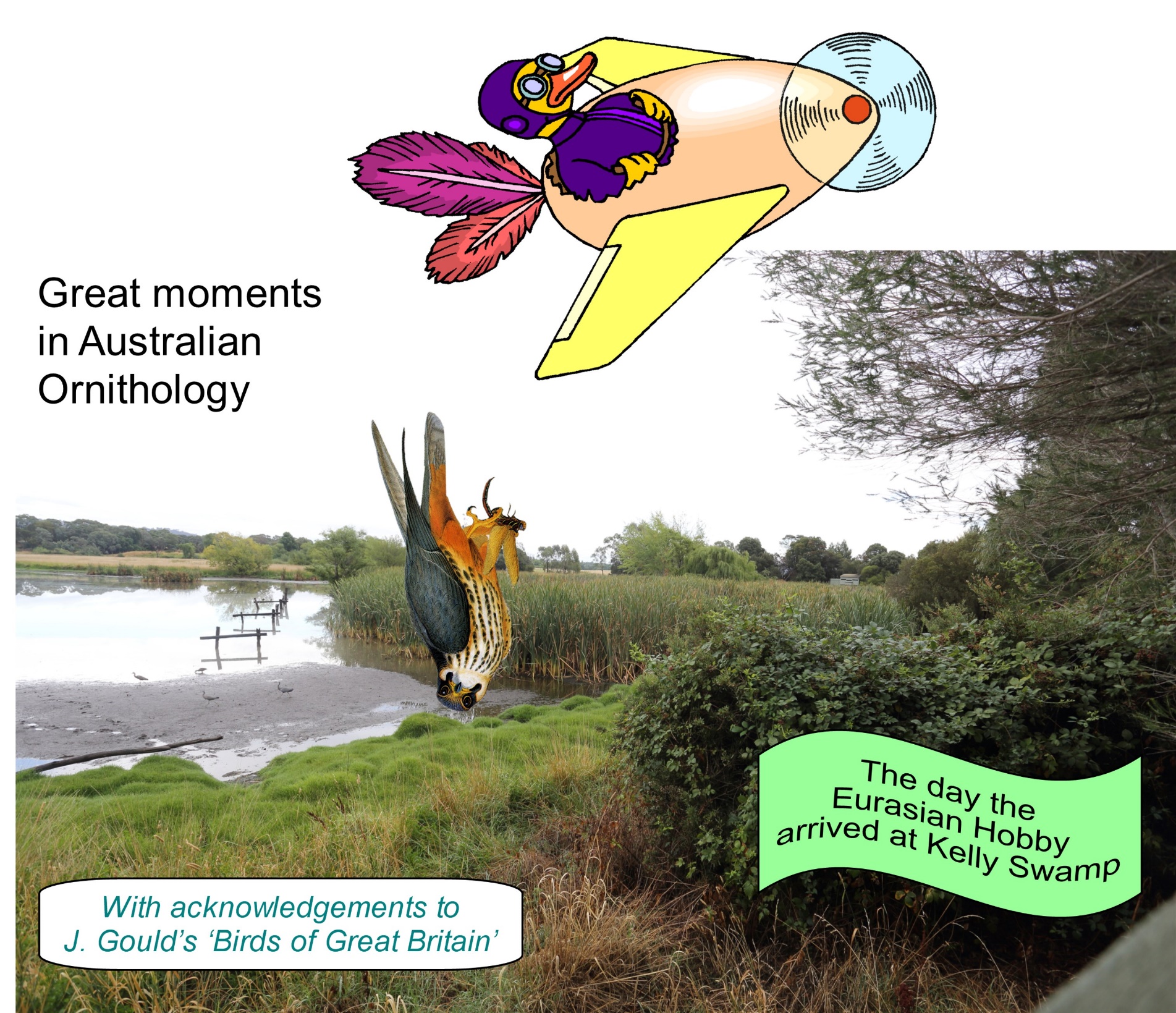The point to be made here, apart from the striking coloration of the hobby in the Gould plate, concerns changing views on the puzzle of vagrancy. In their 1999 book on Australian passerines, Schodde and Mason had omitted
species that ‘only reach Australia by chance’ and were not part of ‘the Australian bird fauna’. The puzzle of vagrancy: with respect to any species so-described, is there an underlying pattern, and if so what is its significance? It was Gould who suggested
that the Northern Shoveler might follow a pattern of visiting Australia during La Nina events, although he did not use quite that language. With respect to the hobby, two possible influences have been mentioned: (a) the current La Nina phase, when ‘we get
more vagrants turning up’ (a cyclical event, but one for which we are now better equipped with more observers in the field), and (b) climate change. To be confident of the effect of (b) on birds in general, and on vagrants in particular, we shall probably
need to see a bit more work. The below graphic does offer an oblique hint in the direction of human intervention. The species usually mentioned when the stowaway hypothesis is aired is the House Crow. I have not seen this mentioned in relation to the vagrant
of the moment, but I see no reason why a hobby could not have entered a cargo hold for one reason or other, or clung somewhere on the superstructure of one of those giant ships, and found itself at an unexpected destination.
From: Canberrabirds <>
On Behalf Of Geoffrey Dabb
Sent: Monday, 29 November 2021 1:43 PM
To: Canberrabirds <>
Subject: Re: [Canberrabirds] Eurasian Hobby in eastern Australia

From: Canberrabirds <>
On Behalf Of Michael Lenz via Canberrabirds
Sent: Monday, 29 November 2021 8:16 AM
To: chatline <>
Subject: [Canberrabirds] Eurasian Hobby in eastern Australia

